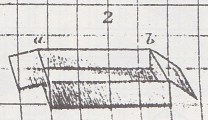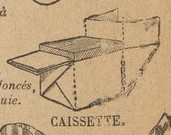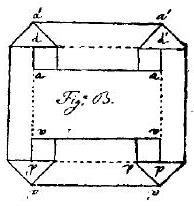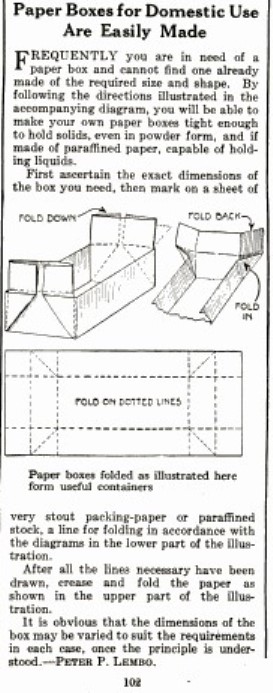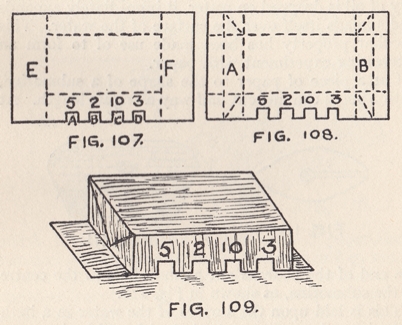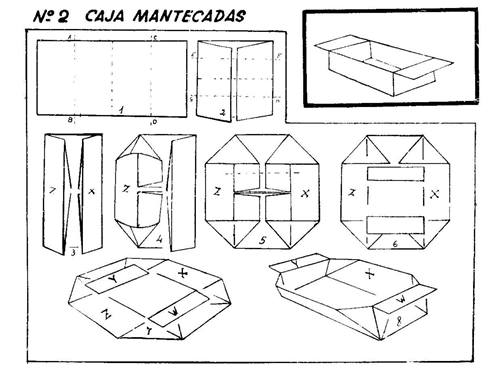| The Public Paperfolding History Project
Last updated 27/8/2025 x |
|||||||
| The Basic Box | |||||||
| This page is being ujsed to
collect information about the history of the paperfolding
design which, for want of a better name, I call the Basic
Box. Please contact me if you know any of this
information is incorrect or if you have any other
information that should be added. Thank you. There is a separate page for the Collapsible Box, a version of the Basic Box which is folded from a 2x3 rectangle so that the base of the box is a square. It can be collapsed to create a closed pouch or package. The Junk Box is a form of the Basic Box made from a blintzed square. ********** In China (and in publications by Chinese authors) 1917 Two versions of the Basic Box appear in 'Xu Zhe zhi tu shuo' (More Illustrated Paperfolding) by Yongxiang Shi, which was published by the Commercial Press in Shanghai in 1917.
********** In Europe and the Americas 1873 As far as I know a version of the Basic Box first appears, as 'Kasten' in 'Die Praxis Des Kindergartens' by August Koehler, which was published by Herman Bohlau in Weimar in 1873.
********** The design also appears: 1895 As 'A Box' in 'Course of Paperfolding' by Eleonore Heerwart, which was published by Charles and Dible in London and Glasgow in 1895.
********** 1900 Another version appears as 'Caissette' inn 'Mes Jolie Jeux' by Henriette Suzanne Bres, which was published by Librairie Hachette in Paris in 1900. The wording says: 'Strong paper box; lomg rectangle folded around a cube, which makes ears' (ie handles)
********** 1907 As 'Bandeja para pildoras' (Pill Tray) in an article titled 'El trabajo manual escolar' by Vicente Casto Legua in issue 191 of the Spanish magazine 'La Escuela Moderna' for February 1907, which was published in Madrid by Los Sucesores de Hernando.
The text says, roughly translated, that 'It is a simple construction that can be used for what its name indicates, as well as for a box for mantecadas, rings etc'. ********** 1921 In 'Popular Science Magazine' for May 1921. Information from Josť Tomas Buitrago.
********** 1923 In 'More Paper Magic' by Will Blyth, which was published by C Arthur Pearson in London in 1923. In this instance holes have been cut into the box so that it can be used as a 'Doorway Scoring Game'.
********** 1951 As 'Cajita con asas' in Plegado laminas published by Della Penna, April 1951.
********* 1952 As 'Caja Mantecadas' (Box for Shortbread) from a 2x1 rectangle in 'Una Hoja de Papel' by Lorenzo Herrero, which was published by Miguel A Salvatella in Barcelona in 1952.
********** |
|||||||



